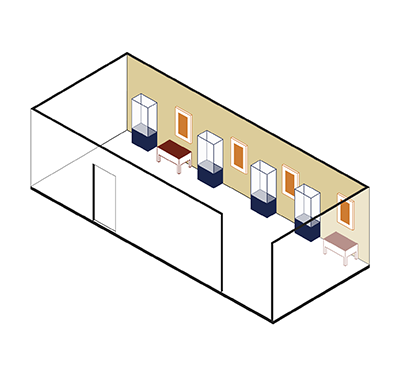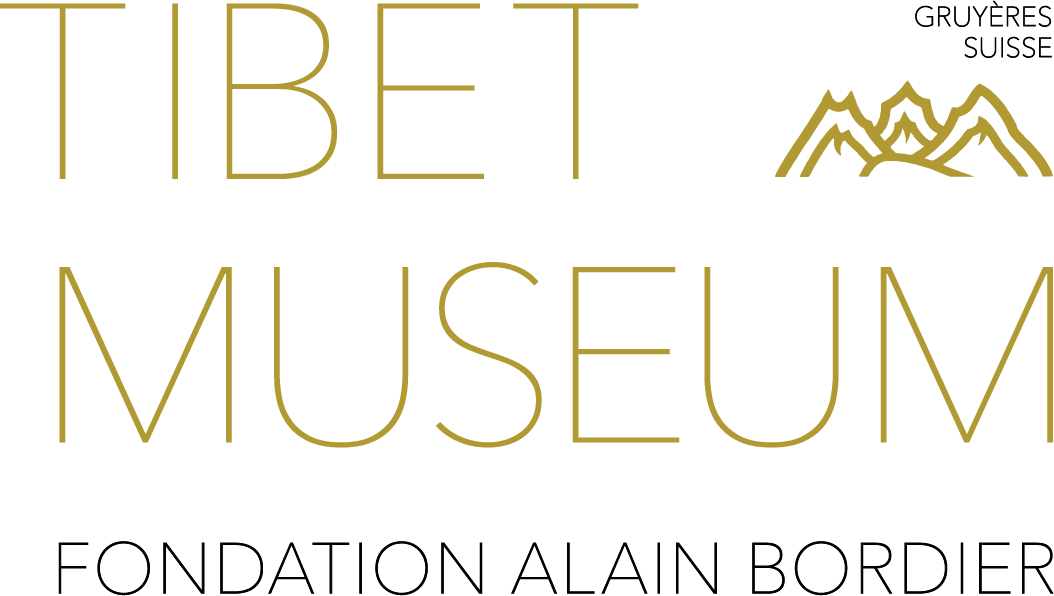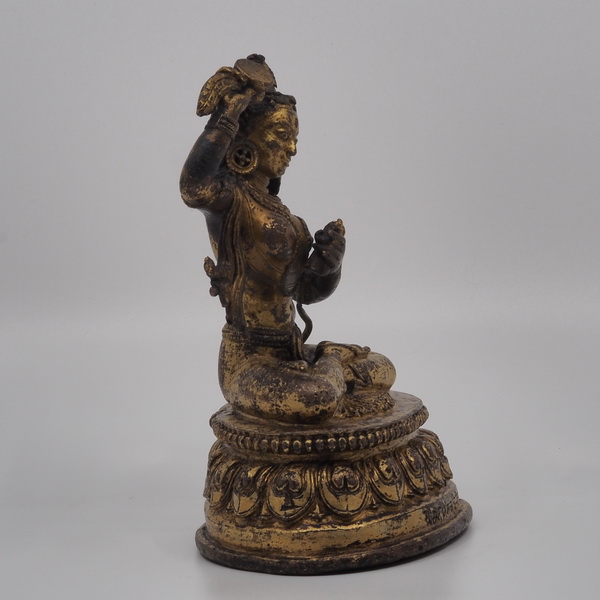Yogini Machik Labdrön (1055-1149) – Founder of the Chö tradition
See it in the Museum

India and Nepal
Orientation 3
Display 5

ABS 252
Code: ABS 252
Country: Nepal (west)
Style: Khasha Malla
Date: 1311
Dimensions in cm WxHxD: 11.5 x 15 x 8
Materials: Gilt copper
Yogini Machik Labdrön (1055-1149) – Founder of the Chö tradition
Machik Labdrön (1055-1149), “the Light of Lab,” is one of Tibet’s most famous female teachers. An exceptional being, her birth was accompanied by many miraculous signs. Endowed with a third eye, from childhood she showed extraordinary abilities in memorizing and understanding the Prajñaparamita. She trained with prestigious masters, fully devoting herself to religious practice.
Meeting the Indian mahasiddha Dampa Sangyé (†1117), she received teaching transmissions that enabled her to initiate Chö “cutting through”—a specifically Tibetan lineage directly implementing the Prajñaparamita. This practice consists in symbolically cutting off attachment to the self, to any kind of grasping and to one’s own body by offering it to “demons” in the form of a tantric feast. These rituals were most often performed in terrifying places such as charnel grounds, using specific instruments such as the kangling, a human thigh-bone trumpet.
At the age of forty, Machik left to meditate alone in isolated places, devoting herself to practice. She gave birth to several children, including a son who became her main disciple and successor. Soon, the practice of Chö spread to all major schools, which all revered this exceptional female teacher as the initial transmission master. During her lifetime, Machik had several visions of Tara and Vajravarahi, who told her that she manifested both themselves and the Prajñaparamita. A true living dakini, Machik alone embodied the nature and qualities of these major feminine characters. To posterity, she is known as Machik, “the unique mother,” a most respectful honorific title.
An inscription allows the dating of this sculpture to 1311 CE.
Machik Labdrön (1055-1149), “the Light of Lab,” is one of Tibet’s most famous female teachers. An exceptional being, her birth was accompanied by many miraculous signs. Endowed with a third eye, from childhood she showed extraordinary abilities in memorizing and understanding the Prajñaparamita. She trained with prestigious masters, fully devoting herself to religious practice.
Meeting the Indian mahasiddha Dampa Sangyé (†1117), she received teaching transmissions that enabled her to initiate Chö “cutting through”—a specifically Tibetan lineage directly implementing the Prajñaparamita. This practice consists in symbolically cutting off attachment to the self, to any kind of grasping and to one’s own body by offering it to “demons” in the form of a tantric feast. These rituals were most often performed in terrifying places such as charnel grounds, using specific instruments such as the kangling, a human thigh-bone trumpet.
At the age of forty, Machik left to meditate alone in isolated places, devoting herself to practice. She gave birth to several children, including a son who became her main disciple and successor. Soon, the practice of Chö spread to all major schools, which all revered this exceptional female teacher as the initial transmission master. During her lifetime, Machik had several visions of Tara and Vajravarahi, who told her that she manifested both themselves and the Prajñaparamita. A true living dakini, Machik alone embodied the nature and qualities of these major feminine characters. To posterity, she is known as Machik, “the unique mother,” a most respectful honorific title.
An inscription allows the dating of this sculpture to 1311 CE.






